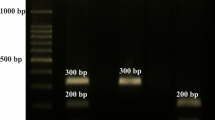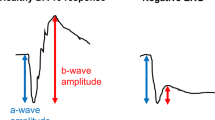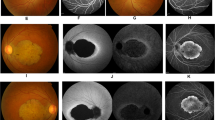Abstract
IN humans, long-wavelength-sensitive and middle-wavelength-sensitive cone pigments are encoded by genes lying in a head-to-tail tandem array on the X chromosome. Deficiencies in red–green colour vision seem to arise from unequal recombination of these normal X-linked genes1,2. In some dichromats this recombination is believed to yield a fusion gene encoding a product with an absorption spectrum similar to that of one or the other of the normal photopigments2. Until now, however, such a relationship between the structure of a pigment gene and the spectral properties of its encoded pigment has not been directly shown. We have now sequenced a fusion gene isolated from a red-green colour-blind human and determined the spectral properties of the pigment that it encodes. The absorption spectrum of the photopigment was very similar to that of normal middle-wavelength-sensitive photopigment, even though about half of its DNA coding sequence seems to be derived from a gene encoding normal long-wavelength-sensitive pigment. These results indicate the regions of the X-encoded photopigment apoproteins that are responsible for differences in their spectral tuning, and imply that the striking variations in colour vision among anomalous trichromats of a particular type are not attributable to anomalous pigments with differing spectral peaks.
This is a preview of subscription content, access via your institution
Access options
Subscribe to this journal
Receive 51 print issues and online access
$199.00 per year
only $3.90 per issue
Buy this article
- Purchase on Springer Link
- Instant access to full article PDF
Prices may be subject to local taxes which are calculated during checkout
Similar content being viewed by others
References
Nathans, J., Thomas, D. & Hogness, D. S. Science 232, 193–202 (1986).
Nathans, J., Piantanida, T. P., Eddy, R. L., Shows, T. B. & Hogness, D. S. Science 232, 203–210 (1986).
Nagy, A. L. J. opt. Soc. Amer. 72, 571–577 (1982).
Pokorny, J. & Smith, V. C. Color Res. Appl. 7, 159–164 (1982).
Neitz, J. & Jacobs, G. H. J. opt. Soc. Amer. A1, 1175–1180 (1984).
Schnapf, J. L., Kraft, T. W. & Baylor, D. A. Nature 325, 439–441 (1987).
Lehninger, A. L. Biochemistry (Worth, New York, 1975).
Hackett, N. R., Stern, L. J., Chao, B. H., Kronis, K. A. & Khorana, H. G. J. biol. Chem. 262, 9277–9284 (1987).
Kosower, E. M. Proc. natn. Acad. Sci. U.S.A. 85, 1076–1080 (1988).
Drummond-Borg, M., Deeb, S. & Motulsky, A. G. Am. J. hum. Genet. 43, 675–683 (1988).
Hurvich, L. M. & Jameson, D. Mod. Probl. Opthalmol. 13, 200–209 (1974).
Wyszecki, G. & Stiles, W. S. Color Science (Wiley, New York, 1982).
Dawis, S. M. Vision Res. 21, 1427–1430 (1981).
DiLella, A. G. & Woo, S. L. C. Meth. Enzym. 152, 199–212 (1987).
Wahl, G. M. et al. Proc. natn. Acad. Sci. U.S.A. 84, 2160–2164 (1987).
Sanger, F., Nicklen, S. & Coulson, A. R. Proc. natn. Acad. Sci. U.S.A. 74, 5463–5467 (1977).
Author information
Authors and Affiliations
Rights and permissions
About this article
Cite this article
Neitz, J., Neitz, M. & Jacobs, G. Analysis of fusion gene and encoded photopigment of colour-blind humans. Nature 342, 679–682 (1989). https://doi.org/10.1038/342679a0
Received:
Accepted:
Issue Date:
DOI: https://doi.org/10.1038/342679a0
This article is cited by
-
Trichromatic color vision with only two spectrally distinct photopigments
Nature Neuroscience (1999)
-
Molecular genetics of human color vision
Behavior Genetics (1996)
Comments
By submitting a comment you agree to abide by our Terms and Community Guidelines. If you find something abusive or that does not comply with our terms or guidelines please flag it as inappropriate.



